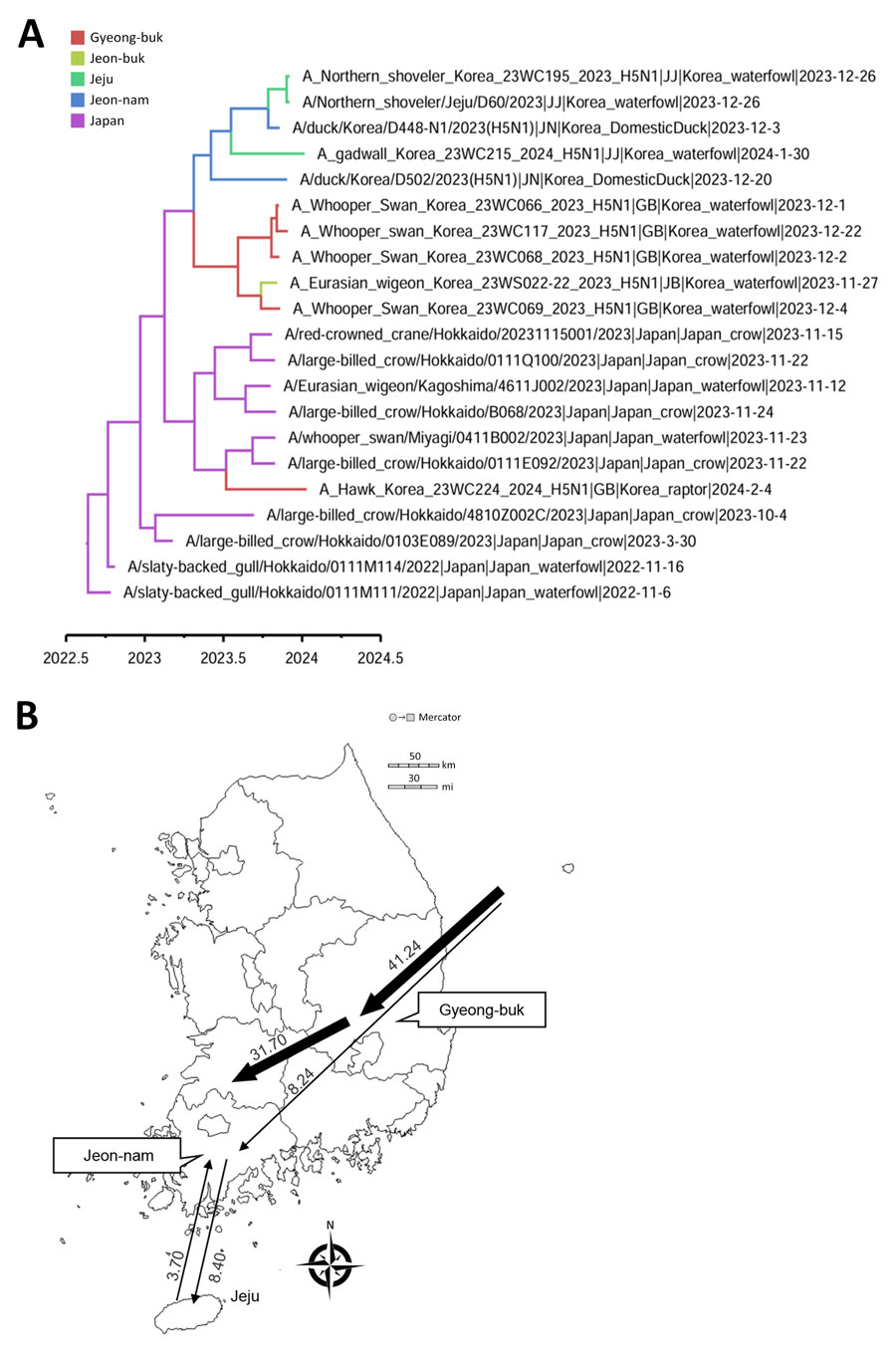Volume 31, Number 8—August 2025
Research
Transmission Dynamics of Highly Pathogenic Avian Influenza A(H5N1) and A(H5N6) Viruses in Wild Birds, South Korea, 2023–2024
Figure 3

Figure 3. Transmission dynamics of highly pathogenic avian influenza A(H5N1) virus in wild birds, South Korea, 2023–2024. A) Maximum clade credibility tree constructed using the hemagglutinin gene of H5N1 viruses. Each branch is colored according to the geographic location. Scale bar shows years of detection in decimal year format. B) Visualization of transmission dynamics inferred by using the geographic location trait in South Korea. Arrows represent the direction of the viral transmission; annotated values along arrows represent Bayes factors. Thick arrows indicate strongly supported routes (Bayes factor >20, posterior probability >0.8). Maps provided by d-maps.com (https://d-maps.com).
1These first authors contributed equally to this article.